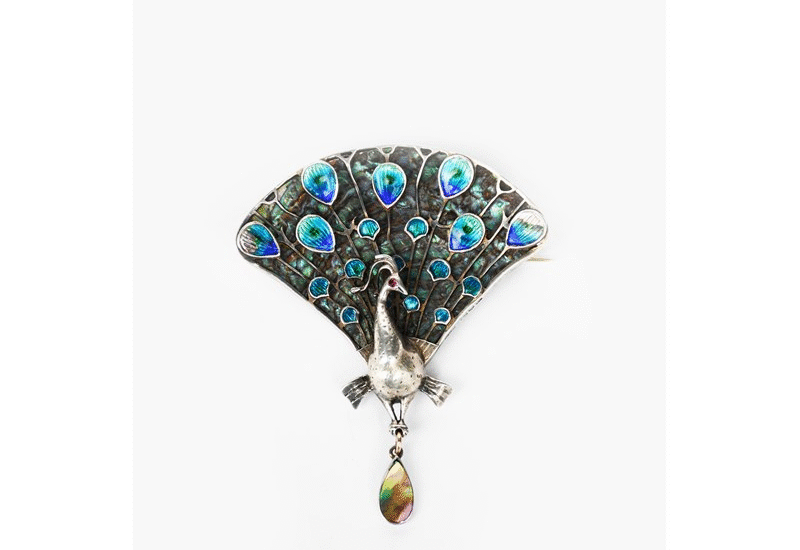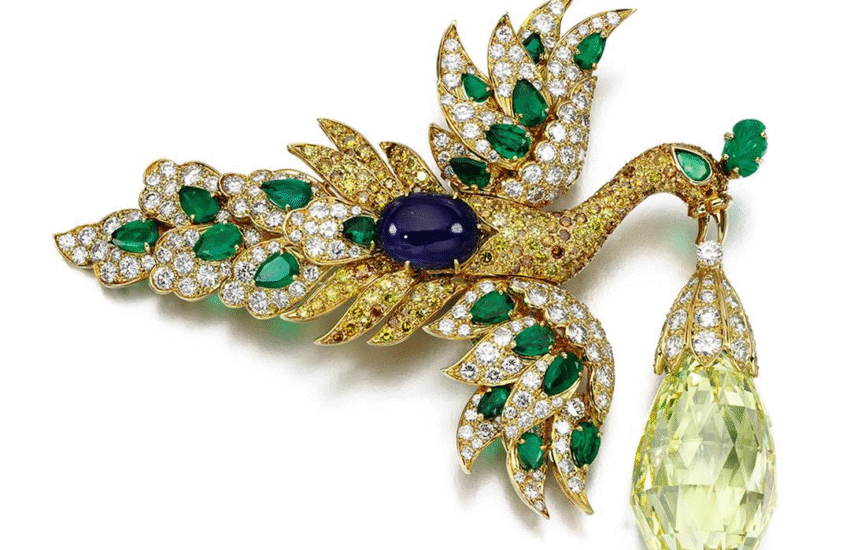An American Romance: The Uncanny Scot and the Advertising Widow
Stories of crime can be a great way to learn about jewellery!
Romance, jewellery and crime make good bed-fellows. Searching for stories about jewellery in old newspapers and magazines often turns up some intriguing stories.
Romance fraud has been in the news lately, with sad stories of people taken in by internet lovers. These deceitful people often hide behind stolen photographs, and persuade their victims to part with large sums of money. However, the case of the Uncanny Scot and Advertising Widow, reported in the Weekly Mail of August 18, 1906, shows that there is nothing new in the world of crime. The gift of a turquoise locket marked the beginning of the love affair but a prosecution for fraud closed it.
Looking for love in the newspapers
The Advertising Widow, from the Weekly Mail story, was Mrs Helen Hamilton, She was, according to the newspaper, one of the most beautiful women in New York. The advert she placed in a newspaper lonely hearts column read ‘Wealthy widow yearns for an indulgent husband. Skidoo for all triflers.’ So far, so good. (Skidoo was popular slang for skedaddle, push off, get lost.) Time wasters were to be discouraged.
Hopeful Americans have advertised for husbands or wives in the newspapers since 1759, according to Francesca Beauman’s excellent Matrimony, Inc.: From Personal Ads to Swiping Right, A Story of America Looking for Love. Practical considerations were as important as personal ones. Partners who could bring money, land or practical skills to the match were in high demand.
The Uncanny Scot Helen Hamilton attracted was a grocer by the name of McClelland. He had made his fortune in groceries after arriving in Philadelphia seven years earlier. He fancied his chances at becoming the indulgent husband she was looking for. His letter proposing this found a good reception, and the lovely Helen declared that the true love of a bonnie Scot would outweigh any Rockefeller millions… She also let him know that the gift of a turquoise locket set with his miniature would help to move the affair on.
A romantic gift
The newspaper offered no further details about the jewel, but I’m imagining something a little like this heart-shaped locket. It’s a suitably romantic shape, with a little locket opening at the back for the image of the beloved. Ovals and circles were also common locket shapes, the opening for the picture hidden inside a hinged locket or in a window on the back.
The appeal of turquoise
Turquoise was a very fashionable choice, as Vogue magazine had explained a few years earlier.
‘Turquoise is so fashionable at present that it would probably suffer the consequences of over-popularity and soon be relegated to the background, were it not that no other coloured stone seems to harmonize so well with the present craze for dull metals and with the many pale shades of cloths and dress materials worn this season. It is also very becoming to both blond and brunette.’
We don’t know what colour Helen’s hair was, but it sounds as if turquoise was a safe option, regardless. Age might have been an issue. Vogue felt that turquoise was best suited to young girls, for “if ever there is a time one has a complexion which can withstand that vividness of tone, it is in one’s ‘teens’”. Evidence which later emerged about Helen’s romantic career suggests that her charms were quite sufficient, whatever her age.
Lockets were widely worn and had become a classic gift for lovers. They were little receptacles for miniature paintings, photographs, locks of hair or other romantic trifles. Sending a locket with your image or hair was an intimate gesture which suggested a desire to further the relationship. The picture was hidden away, to be shown only to those you trusted or wanted to share your feelings with.
The besotted grocer McClelland duly posted his turquoise locket, priced at £50, and had soon lent her a further £500. This is a progression which will be sadly familiar to those caught up in similar scams today.
A sorry ending
After a week of active courtship, McClelland headed to Helen’s riverside house. When he was denied admittance, he became suspicious. For some reason, he decided to shave off his moustache – just one of the puzzling details in this delicious story. He might have worried that she would recognise his splendid whiskers from the picture in the locket? I do wonder though whether Helen was more interested in obtaining the locket than in the picture it contained. Perhaps she hadn’t spent as much time gazing at it lovingly as he might have hoped.
The disappointed and newly shaven McClelland called the police. He learnt the distressing news that she owed her magnificent riverside home to the generosity of at least 100 men who had romanced her under her many different aliases. A government prosecution for ‘using the mails for fraudulent purposes’ was on the way. Clearly McClelland wasn’t the only victim of her activities.
The article finishes with some tantalising details. McClelland and Hamilton were still prepared to marry, despite everything. The paper also reported that Helen Hamilton had horse whipped her former husband the previous year when he had complained about her morals. So far, I haven’t found any more details about the mail fraud case or the horse whipping – perhaps due to the many aliases she used?
Skidoo for all triflers! And a lucky escape for Mr McClelland, the Philadelphia grocer.
More stories about jewellery
Dukes, pearls and an unhappy marriage
Love and divorce: betrayed by a locket
‘A fine fellow full of pluck’ – the sad end of the Prince Imperial and his unlucky locket


